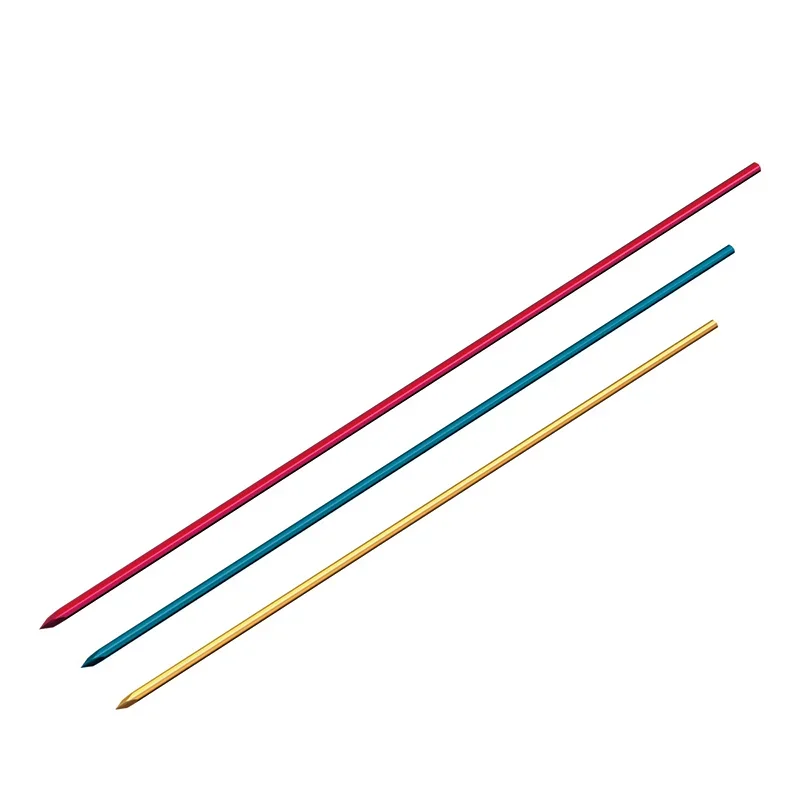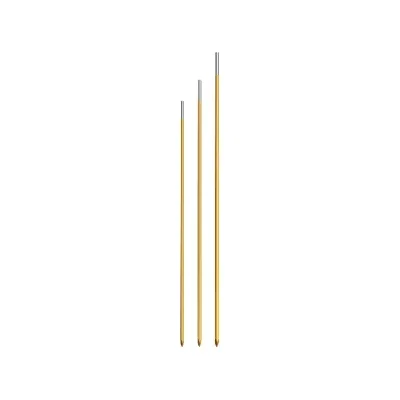The world of medicine is constantly evolving, with new technologies and techniques emerging every day. One such technology that has been around for over a century is Kirschner wire (K-wire). Used in various medical procedures, K-wire has proven to be an effective tool in treating complex fractures and dislocations. In this blog post, we will explore the history of K-wire, its application in the medical field, as well as its pros and cons through real-life case studies. So grab a cup of coffee and let's dive into the fascinating world of Kirschner wire!
What is Kirschner Wire?
Kirschner wire, commonly known as K-wire, is a thin and flexible wire made of stainless steel or titanium. It was first introduced in the early 1900s by Martin Kirschner, a German surgeon who developed the technique for using wires to fixate bone fragments after fractures.The wire comes in different sizes and diameters ranging from 0.5mm-6mm depending on its intended use. The most common size used in orthopedic procedures ranges between 1mm-2mm.K-wires are inserted into bones through small incisions or puncture wounds without cutting into the surrounding soft tissue. They work by holding broken bone fragments together, providing stability during the healing process until new bone tissue repairs the fracture.Aside from treating fractures and dislocations, K-wires are also used to stabilize joints during surgery such as finger joint fusion and wrist arthrodesis. Furthermore, they can be used for temporary immobilization of unstable joints or realignment of bony deformities before more definitive surgical interventions.Kirschner wire has become an essential tool in modern medicine due to its versatility and effectiveness when it comes to repairing fractured bones and stabilizing joints during surgeries.

History of Kirschner Wire
The Kirschner wire, or K-wire for short, is a type of medical implant used in various surgeries. The name comes from its inventor Martin Kirschner, who first introduced the concept of using wires to fix bone fractures in 1909.Before the invention of K-wires, doctors would manually manipulate and align broken bones before immobilizing them with a cast or splint. However, this method had limitations since it relied on the patient's ability to hold still during healing.Kirschner's innovation allowed for more precise alignment and stabilization by inserting a thin metal wire through the skin and into the bone fragments. Over time, different variations of the K-wire were developed to suit specific surgical needs.Today, K-wires are commonly used in orthopedic procedures such as fracture fixation and joint fusion. They have also been adapted for use in other areas like dentistry and even veterinary medicine.Despite its age-old design, Kirschner wire remains an important tool for modern medicine due to its versatility and effectiveness in treating various conditions.
How is Kirschner Wire used in the medical field?
Kirschner wire, commonly known as K-wire, is a thin and flexible surgical tool made of stainless steel or titanium. It has been used in the medical field for years to fix fractures, hold bone fragments together during surgery or provide support to broken bones while they heal.The primary use of K-wire is in orthopedic surgeries where it is employed as a temporary fixation device. The surgeon drills it into the bone on either side of the fracture and removes it after healing has taken place. Depending on how complex the injury is, multiple wires may be required to stabilize it.Apart from that, K-wires are also used in hand surgeries, spinal surgeries and foot and ankle procedures. In hand surgeries such as carpal tunnel release or finger joint reconstruction surgery, K-wires are useful due to their small size and ease of maneuverability. They help surgeons position bones accurately without causing further damage.In spinal surgeries like spinal fusion or scoliosis correction procedure where screws cannot be placed safely; this versatile tool helps stabilize vertebrae through pedicle screw placement by guiding them through with greater accuracy.However, there can be some drawbacks associated with using K-wires too including pin tract infections which occur when bacteria enter via the entry point at which wire entered your skin resulting in redness around your wound site but these risks have considerably reduced over time due to advanced sterilization techniques and improved surgical methods.Though kirschner wires remain an invaluable instrument within numerous fields throughout medicine's vast network; providing countless benefits for doctors looking to achieve better outcomes for patients undergoing invasive procedures thanks largely because its simplicity yet effectiveness!

Pros and cons of Kirschner Wire
Kirschner wire is considered an efficient tool in the medical field, but like any other medical instrument, it has its advantages and disadvantages. In this section, we will discuss the pros and cons of Kirschner wire.
Pros:
One of the primary benefits of using K-wires is their ability to stabilize fractures during surgeries. They can also be used for joint fusions and dislocations since they allow for quick healing without putting much stress on patients' bones.They are a low-cost option compared to other surgical tools. They're versatile too; you can use them in various ways such as bone alignment or even helping with spinal surgery.Another advantage of using K-wire is that they don't need removal after treatment unless there's some complication.
Cons:
Despite being useful instruments, K-wires come with certain drawbacks. One major disadvantage is that if not correctly placed or left for longer periods than necessary, they may lead to complications such as nerve damage, infections or chronic pain.Additionally, due to their thin structure and sharp ends needed for insertion into bones or tissue areas during surgeries - they have a higher risk of breaking off inside patients’ bodies.Like any surgical tool – there are both pros and cons when considering whether or not to use Kirschner wires in medical procedures. Ultimately it’s up to healthcare professionals to evaluate each patient’s individual needs before making decisions about which type(s) would best suit them based on particular requirements/issues at hand.

Case studies
Case studies are a crucial part of any medical research, and Kirschner wire has been the subject of many such studies. One study published in the Journal of Orthopaedic Trauma evaluated the use of K-wires for treating distal radial fractures. The results showed that using K-wires resulted in better outcomes compared to other methods.Another study conducted at King's College Hospital in London explored the efficacy of using K-wires for surgery on patients with ankle fractures. The findings revealed that using this technique yielded positive results with fewer complications.A third case study focused on a patient who had sustained a traumatic injury to their finger resulting in bone displacement. Using K-wire as part of their treatment plan led to successful realignment without complications.These case studies demonstrate how versatile and effective Kirschner wire can be when utilized correctly by skilled medical professionals. It is important to note that while these studies have shown encouraging results, each patient's situation is unique, and treatment plans must be tailored accordingly.
Conclusion
To conclude, Kirschner wire is a versatile tool that has been used in the medical field for many years. It has proved to be an effective method of stabilizing fractures and aiding in bone alignment for surgeries. While it does have its limitations and potential complications, proper use by trained professionals can ensure successful outcomes.With advancements in technology, new methods of fracture stabilization are emerging; however, Kirschner wire remains a valuable asset to orthopedic surgeons worldwide. Its low cost and ease of use make it accessible to healthcare providers even in resource-limited settings.Kirschner wire will continue to play an essential role in the medical field as long as there is a need for quick and reliable fracture treatment options.Please contact us,if you are interested in it.sales@inaturemedic.com







